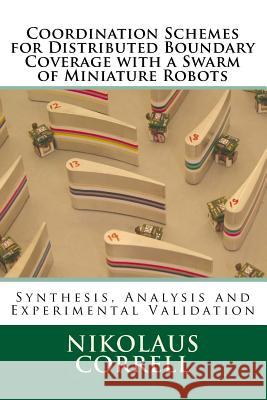Coordination Schemes for Distributed Boundary Coverage » książka
Coordination Schemes for Distributed Boundary Coverage
ISBN-13: 9780692668726 / Angielski / Miękka / 2016 / 158 str.
This book provides a comparison of a series of original coordination mechanisms for the distributed boundary coverage problem with a swarm of miniature robots. Analysis is based on real robot experimentation and models at different levels of abstraction. Distributed boundary coverage is an instance of the distributed coverage problem and has applications such as inspection of structures, demining, cleaning, and painting. Coverage is a particularly good example for the benefits of a multi-robot approach due to the potential for parallel task execution and additional robustness out of redundancy. The constraints imposed by a potential application, the autonomous inspection of a jet turbine engine, were the motivation for the algorithms considered in this thesis. Thus, there is particular emphasis on how algorithms perform under the influence of sensor and actuator noise, limited computational and communication capabilities, as well as on the policies about how to cope with such problems. The algorithms developed in this dissertation can be classified into reactive and deliberative algorithms, as well as non-collaborative and collaborative algorithms. The performance of these algorithms ranges from very low to very high, corresponding to highly redundant coverage to near-optimal partitioning of the environments, respectively. At the same time, requirements and assumptions on the robotic platform and the environment (from no communication to global communication, and from no localization to global localization) are incrementally raised. All the algorithms are robust to sensor and actuator noise and gracefully decay to the performance of a randomized algorithm as a function of an increased noise level and/or additional hardware constraints.











